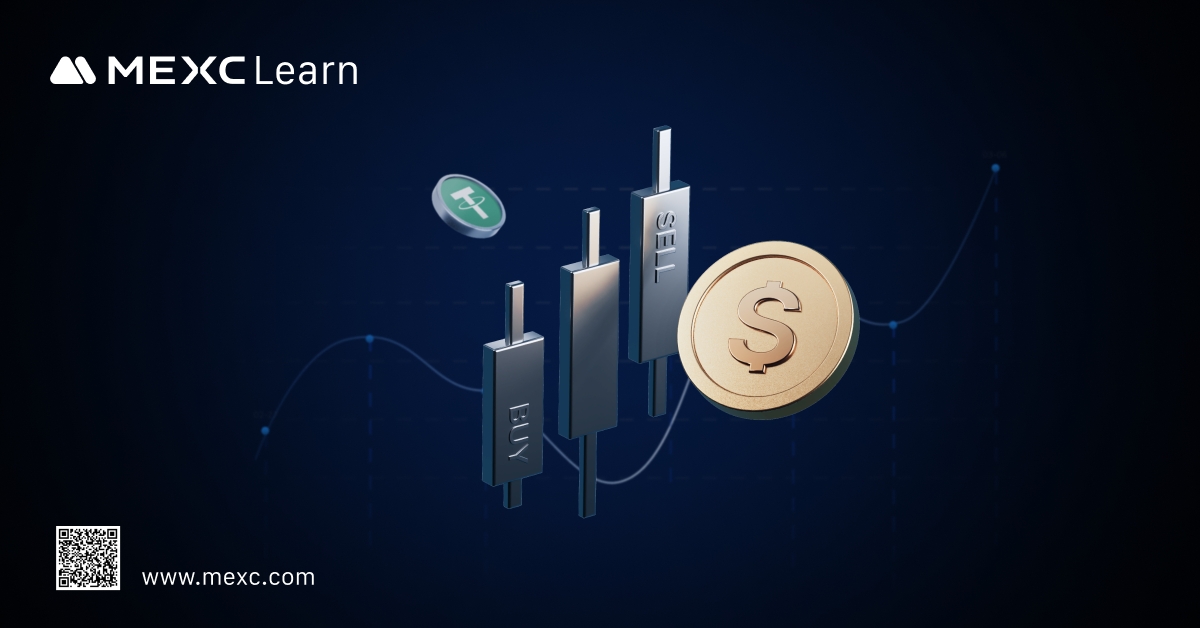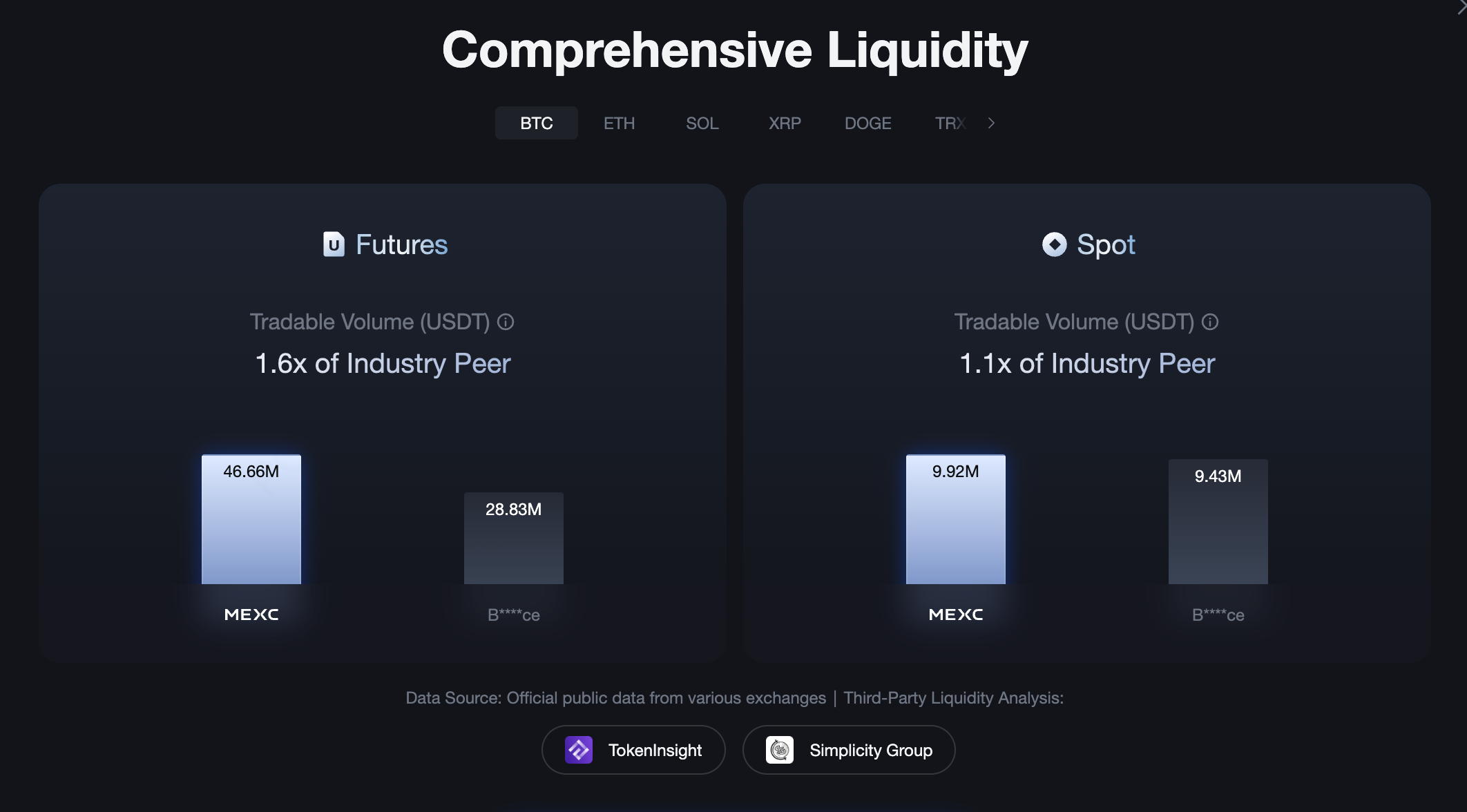MEXC Exchange/Learn/Beginner's Guides/Futures/What are Perpetual Futures? A Comprehensive Guide to How They Work and the Principles Behind Them
What are Perpetual Futures? A Comprehensive Guide to How They Work and the Principles Behind Them
Related Articles

In the fast-paced world of cryptocurrency trading, perpetual futures have quickly become a go-to tool for investors looking to hedge risks or amplify returns. Compared to traditional spot trading, perpetual futures offer several advantages: no expiration date, bidirectional trading, and support for high leverage. These features have made them a staple in professional trading strategies for major assets like BTC and ETH.
Whether you're aiming to short the market, ride long-term trends, or build systematic trading models, understanding how perpetual futures work, including mechanisms like funding rate calculations, is essential for achieving consistent profitability.
This article will provide a comprehensive overview of:
The definition of perpetual futures and how they differ from traditional futures,
The underlying design of MEXC's Futures trading mechanism,
How funding rates are calculated and their practical significance,
How to formulate effective strategies in different market conditions,
Common beginner questions and risk management tips.
1. What Are Perpetual Futures?
Perpetual futures are a type of derivative trading instrument that allows users to go long or short on an underlying asset, such as BTC or ETH, without needing to actually hold the asset itself.
1.1 Perpetual Futures vs. Traditional Futures
Characteristic | Perpetual Futures | Traditional Futures |
Expiration Date | None | Yes (e.g., quarterly settlement) |
Price Anchoring | Funding rate mechanism | Natural convergence at expiry |
Closing Restrictions | Positions can be closed anytime, supports long-term holding | Auto-settlement or forced close at expiry |
Typical Use Cases | High-frequency trading, short hedging, arbitrage | Speculation, hedging, institutional risk management |
The perpetual nature of these contracts makes their trading style more similar to Spot trading, while still offering leverage and the ability to go both long and short, features that have made them popular among both institutional and retail traders.
2. How Perpetual Futures Work: 3 Core Mechanisms
2.1 No Expiry Date: Flexible Position Holding
Unlike traditional futures, perpetual futures have no fixed settlement date. This allows traders to hold positions for as long as they choose, adapting to market conditions and personal strategies. By removing the constraint of forced closing at expiry, perpetual futures offer greater flexibility and continuity in implementing trading strategies.
2.2 Settlement Mechanism: How is PNL Calculated?
Perpetual futures typically use the Fair Price, not the last traded price, to calculate unrealized profit and loss (PNL). This helps prevent price manipulation and avoids unnecessary liquidation.
Fair Price: A weighted index derived from the spot prices of the asset across multiple exchanges. It reflects a fair market value.
Example: If BTC spot prices across several exchanges are 30,000, 30,100, and 29,950 USDT, the system calculates a weighted average of 30,017 USDT as the fair price.
Unrealized PNL: The current profit or loss of an open position, calculated using the fair price.
Example: If you open 1 cont. of long ETH position at 3,000 USDT and the current fair price is 3,500 USDT, your unrealized profit is (3,500 - 3,000) × 1 = 500 USDT.
Liquidation: If losses reduce your account margin below the maintenance requirement, the system will automatically liquidate your position to prevent a negative balance.
Example: If your margin balance is only 200 USDT and your loss reaches 300 USDT, the system will trigger a liquidation to avoid further risk.
2.3 Funding Rate Mechanism: Why Don't Perpetual Prices Diverge from Spot?
To prevent the price of perpetual contracts from deviating significantly from the spot market, a funding rate mechanism is introduced. This system ensures price alignment by incentivizing long and short positions to balance through periodic payments.
2.3.1 How the Funding Rate Works:
- Positive Funding Rate: Longs pay shorts
- Negative Funding Rate: Shorts pay longs
- Settlement Frequency: Every 8 hours
- Note: Exchanges do not collect funding fees. They are directly settled between traders.
Example:
Suppose the funding rate is +0.01% and you hold a long position worth 1,000 USDT:
- At the next funding interval, you will pay 0.1 USDT to short holders (1,000 × 0.01%).
- If you close your position before the funding time, you will not be charged.
2.3.2 Why is the Funding Rate Important for Traders?
Holding short positions during positive funding rates can generate funding income,
Funding fees should be considered a cost when holding positions for an extended period,
For high-frequency or short-term trading strategies, funding fees are generally negligible.
3. Advantages of MEXC Perpetual Futures
MEXC offers a wide range of futures products covering mainstream cryptocurrencies and trending new tokens, supporting both USDT-M and Coin-M Futures. The platform provides a stable and mature trading experience, backed by low slippage, high liquidity, and real-time execution. It is equipped with a full suite of professional tools including take-profit/stop-loss, trailing stop, Futures statements, and funding fee breakdowns, all designed to help users manage risk and analyze profits and losses effectively. Futures trading is suitable for users with a certain level of market understanding and risk tolerance, particularly those employing short-term, event-driven, or trend-based strategies.
Advantage Aspect | Description |
Flexible Leverage Options | Supports both low and high leverage, allowing users to adjust risk exposure freely |
Diverse Token Support | Offers 1200+ trading pairs including BTC, ETH, SOL, DOGE, and more |
Ultra-Fast Matching Engine | MEXC's engine can process millions of orders per second, ensuring smooth high-frequency trading |
Robust Risk Management | Includes partial liquidation, liquidation alerts, and automatic deleveraging protection |
Comprehensive Educational Resources | Provides beginner tutorials, demo trading, and strategy tool support |

Whether you're a professional trader or looking to transition from Spot to Futures trading, MEXC offers comprehensive support.
*BTN-Start Futures Trading&BTNURL=https://www.mexc.com/futures/BTC_USDT?type=linear_swap*
4. Perpetual Futures Trading Strategies: How to Use Them in Different Market Conditions
As a flexible derivative instrument, perpetual futures can serve a variety of trading objectives and styles. To effectively navigate the high volatility of the crypto market, it's essential to understand how to apply the right strategy under different market conditions. Below are recommended trading approaches and operational tips aligned with common trading goals.
Trading Objective | Recommended Strategy | Futures Trading Tips |
Bullish Trend | Long Position, Hold | Use isolated margin with appropriate leverage, set take-profit/stop-loss based on MACD and support levels. Monitor funding rates for long-term positions. |
Bearish Market | Short Position | Enter quickly to capture downside. Use candlestick breakdowns or moving average death cross signals. Closely track funding rate changes to manage costs. |
High-Frequency Arbitrage | Exploit Minor Price Gaps, Liquidity Imbalances | Place limit orders in hedge mode with low-latency strategies. Optimize order prices precisely, best suited for advanced high-frequency traders. Control slippage and fee exposure. |
Range-Bound Market | T+0 Trading (Buy Low, Sell High) | Enter and exit positions near support/resistance levels in batches. Use volume and Bollinger Bands to improve entry accuracy. |
Swing Trading | Trend Following, Scaled Entry | Follow 4H or daily trends. Use EMA indicators to identify entry points. Apply layered scaling and trailing take-profit strategies. |
Note: It's recommended to analyze market trends using a combination of core technical indicators such as MACD, candlestick patterns, and trading volume. Cross-validating multiple indicators can improve decision-making accuracy and reduce the risk of misjudgments caused by relying on a single signal. Strategies should also be adjusted flexibly in response to real-time market dynamics to ensure more adaptive and resilient execution.
5. How to Trade Perpetual Futures on MEXC
Thanks to their flexible mechanics and leverage options, perpetual futures have become a key trading tool for many crypto investors. To make the most of market opportunities, it's essential to understand the basic steps involved. Here's how to quickly start trading perpetual futures on MEXC:
In just three steps, users can begin trading perpetual futures on MEXC.
1) Open and log in to the MEXC App or visit the official website.
2) In the search bar, enter BTC and select Futures trading.
3) Choose the order type, enter the quantity and price, and complete the transaction.
MEXC Futures trading is fully equipped, supporting a variety of order types including limit orders, market orders, and take-profit/stop-loss functions.

Start trading Perpetual Futures on MEXC today and stay ahead of the market.
*BTN-Trade BTC Perpetual Futures&BTNURL=https://www.mexc.com/futures/BTC_USDT*
6. FAQ: Everything You Want to Know About Perpetual Futures
Are perpetual futures suitable for beginners?
Perpetual futures carry higher risks. Beginners are advised to start with Demo Trading to practice. It's important to fully understand stop-loss mechanisms and how leverage works before engaging in live trading.
Will I incur a negative balance if my perpetual futures position is liquidated?
MEXC has a robust liquidation mechanism and Auto-Deleveraging (ADL) system in place to prevent users from ending up with negative balances. However, liquidation can still result in the loss of your entire margin.
Will I always be charged a funding fee?
No. Funding fees are only applied if you hold a position across the funding rate settlement time. If you close your position before the settlement period, no funding fee will be charged.
How can I avoid liquidation when trading futures?
Beginners are advised to use low leverage (preferably 5x or less, and generally not exceeding 10x), and to set strict take-profit and stop-loss orders to lock in profits and limit losses. Always monitor the liquidation price warnings, adjust your positions, or add margin when needed. It's also recommended to use isolated margin mode to limit risk exposure to a single position. Staying calm and avoiding emotional decisions is key to reducing the risk of liquidation and ensuring safer trading.
7.How Can I Manage Risk in Perpetual Futures Trading?
While perpetual futures offer high return potential, they also come with significant risks. Common risks include:
- Liquidation from high leverage: Beginners should stick to leverage below 5x,
- Funding fees eating into profits: Long-term positions require careful evaluation of funding rate costs,
- Liquidation during extreme market conditions: Always set stop-losses to avoid emotional trading.
Risk management tips:
- Use isolated margin to limit the risk of each trade,
- Set take-profit and stop-loss levels to secure gains or control losses,
- Monitor funding rate fluctuations and consider entering at lower-cost times,
- Practice with Demo Trading to test strategies and gradually build systematic trading skills.
8.Conclusion: Perpetual Futures as an Advanced Tool for Crypto Traders
Perpetual futures are one of the most widely used derivatives in the crypto space. With no expiry date, support for leveraged long and short positions, and a funding rate mechanism, they create a flexible and strategy-oriented trading environment. These contracts are not only useful for hedging and amplifying returns, but also serve as an effective tool for navigating volatile markets with precision.
On MEXC, traders can take advantage of a powerful matching engine, flexible leverage options, and a full suite of risk management tools. This enables both new and experienced users to progress from entry-level to advanced trading. Whether you are a high-frequency quant or a retail investor seeking stable returns, understanding how perpetual contracts work is the first step toward professional trading.
Learn the structure, follow the logic, and respond faster to every market move. Begin your perpetual futures journey on MEXC and build your competitive edge.
*BTN-Start Futures Trading&BTNURL=https://www.mexc.com/futures/BTC_USDT*
Disclaimer: This material does not constitute advice on investments, taxes, legal matters, finance, accounting, consulting, or any other related services, nor is it a recommendation to buy, sell, or hold any assets. MEXC Learn provides information for reference only and does not constitute investment advice. Please ensure you fully understand the risks involved and invest cautiously. All investment decisions and outcomes are the sole responsibility of the user.